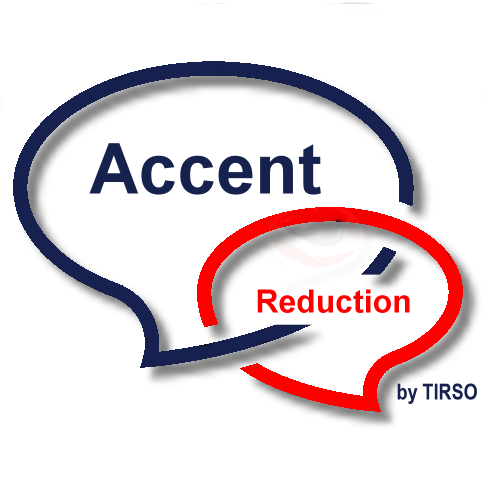
American Accent Reduction for Spanish Speakers by TIRSO.
Goal: To help Spanish speakers reduce accent interference and develop fluent, natural-sounding American English pronunciation that closely resembles native speech.
Duration: 12 Weeks (3 Months)
Target Audience: Intermediate to Advanced Spanish-speaking Learners of English.

Contents:
WEEK 1: PRONUNCIATION CHALLENGES FOR SPANISH SPEAKERS
OBJECTIVE: Identify key pronunciation differences between Spanish and American English.
BENEFIT: Builds awareness of specific areas to improve and sets a foundation for targeted practice.
HOW IT HELPS: The practice this week will help students raise awareness of the most common pronunciation problems Spanish speakers experience: syllable timing, missing sounds, and over-articulation. The first step toward focused improvement and accent reduction is knowledge of these difficulties.
1.1 Spanish vs. English Phonemic Inventory
1.2 Syllable-Timed (Spanish) vs. Stress-Timed (English) Rhythm
1.3 Final Consonant Devoicing (e.g., “bad” → “bat”)
1.4 Vowel Length and Reduction
1.5 Over-Articulation of Unstressed Syllables
WEEKS 2–3: VOWEL SOUNDS (MONOPHTHONGS & DIPHTHONGS)
OBJECTIVE: Master the American English vowel system, especially contrasts not present in Spanish.
BENEFIT: Reduces vowel substitution errors (e.g., “ship” vs. “sheep”) and improves clarity.
WEEK 2: Monophthongs
HOW IT HELPS: English has more than a dozen pure vowels; Spanish has only five. The practice this week will help students differentiate between similar-sounding vowels (e.g., /iː/ vs. /ɪ/), which is essential for avoiding misconceptions (e.g., “live” vs. “leave,” and sounding more native-like.
2.1 Short vs. Long Vowels: /ɪ/ vs. /iː/, /æ/ vs. /ɑː/, /ʌ/ vs. /ɑ/
2.2 Central Vowels: /ʌ/, /ɜː/, /ə/
WEEK 3: Diphthongs
HOW IT HELPS: Spanish speakers sometimes mispronounce or flattish diphthongs. Learning them enhances intonation, rhythm, and vowel clarity, so transforming speech sound into more dynamic and expressive form.
3.1 /aɪ/, /eɪ/, /oʊ/, /aʊ/, /ɔɪ/
3.2 Gliding and Vowel Transitions
3.3 Common Diphthong Errors for Spanish Speakers
WEEKS 4–5: CONSONANT SOUNDS
OBJECTIVE: Produce American English consonants accurately, especially those absent or different in Spanish.
BENEFIT: Improves intelligibility and reduces common errors like “berry” vs. “very” or “think” vs. “sink.”
WEEK 4: Voicing & Fricatives
HOW IT HELPS: Some English fricatives include /v/, /θ/, and /ð/-are lacking from Spanish. Essential for effective communication and avoiding confusion (e.g., “think” vs. “sink,” this week helps students distinguish and generate these sounds.
4.1 Voiced/Voiceless Pairs: /b/ vs. /p/, /d/ vs. /t/, /g/ vs. /k/
4.2 Fricatives: /v/, /f/, /θ/, /ð/, /z/, /s/
4.3 Final Consonant Pronunciation
WEEK 5: Liquids, Affricates & Clusters
HOW IT HELPS: Many times, Spanish speakers mispronounce /r/ and affricates and simplify consonant clusters. Key for intelligibility, the practice this week will help students improve their pronunciation. Keep the integrity of English word forms and enhance articulation accuracy.
5.1 /r/ vs. Spanish Tapped /ɾ/
5.2 /ʃ/, /ʧ/, /ʤ/ vs. /s/, /tʃ/
5.3 Initial and Final Consonant Clusters (e.g., “street,” “asked”)
WEEK 6: SYLLABIC STRESS
OBJECTIVE: Understand and apply correct syllable stress in multisyllabic words.
BENEFIT: Helps avoid flat or robotic speech and improves naturalness.
HOW IT HELPS: English stress varies; Spanish stress patterns are more predictable. Learning stress norms increases natural rhythm, helps students avoid monotone speech, and clarifies their English.
6.1 Primary vs. Secondary Stress
6.2 Stress in Nouns, Verbs, and Adjectives
6.3 Stress Shift in Word Families (e.g., “photograph” → “photography”)
WEEK 7: WORD STRESS PATTERNS
OBJECTIVE: Learn stress patterns in nouns, verbs, and adjectives.
BENEFIT: Enhances listener comprehension and reduces misunderstandings.
HOW IT HELPS: Correct word stress can change meaning (e.g., “record vs. re’cord”). The practice this week will help students avoid sounding robotic or alien and sound more confident and fluid.
7.1 Stress Shift in Word Families & Compound Nouns vs. Adjective + Noun
7.2 Prefix and Suffix Stress Rules
7.3 Stress in Phrasal Verbs (e.g., “take off” vs. “takeoff”)
WEEK 8: CONTENT VS. FUNCTION WORDS
OBJECTIVE: Differentiate and appropriately stress content words while reducing function words.
BENEFIT: Develops native-like rhythm and reduces over-articulation.
HOW IT HELPS: Spanish speakers can emphasize every word equally, therefore upsetting English rhythm. Emphasizing content words and learning to cut function terms helps students sound more natural and native-like.
8.1 Identifying Content (Nouns, Verbs, Adjectives) vs. Function Words (Articles, Prepositions)
8.2 Weak Forms of Function Words (e.g., “to” → /tə/)
8.3 Rhythm Practice with Real Sentences
WEEK 9: THE SCHWA /ə/
OBJECTIVE: Recognize and produce the schwa sound in unstressed syllables.
BENEFIT: Reduces syllable-timed rhythm and improves fluency.
HOW IT HELPS: English’s most often occurring vowel is the schwa, which does not exist in Spanish. Learning to master it helps students cut over-articulation, adapt natural speech patterns, and enhance listening comprehension.
9.1 Schwa in Prefixes/Suffixes (e.g., “about,” “support”)
9.2 Schwa in Reduced Function Words
9.3 Schwa vs. Full Vowel Contrast
WEEK 10: LINKING PATTERNS
OBJECTIVE: Connect words smoothly in speech using linking techniques.
BENEFIT: Reduces choppy speech and increases fluency.
HOW IT HELPS: Spanish speakers sometimes split words. Learning linking strategies helps students connect words effortlessly, therefore enhancing fluency and making their speech more natural-like.
10.1 Consonant-to-Vowel Linking (“pick it up” → “pickitup”)
10.2 Vowel-to-Vowel Linking with /j/ or /w/ (“go on” → “gowon”)
10.3 Intrusion and Elision
WEEK 11: INTONATION PATTERNS
OBJECTIVE: Use rising and falling intonation to convey meaning and emotion.
BENEFIT: Improve comprehension, sound more natural and fluent, express emotions clearly, and better understand spoken language.
HOW IT HELPS: Spanish intonation is more homogeneous. Intonation is English’s means of expressing intent, meaning, and feeling. The practice this week will help students avoid sounding flat, be more expressive, and involve listeners more successfully.
11.1 Rising vs. Falling Intonation
11.2 Intonation in Yes/No vs. Wh- Questions
11.3 Emphasis and Contrastive Stress
WEEK 12: RELAXED PRONUNCIATION & REVIEW
OBJECTIVE: Apply relaxed forms and connected speech in real-life contexts.
BENEFIT: Enhances naturalness and listening comprehension.
HOW IT HELPS: In casual speech, native speakers sometimes use simplified forms. Especially in informal environments, learning these helps students communicate more naturally and grasp real-life dialogues.
12.1 Common Reductions: “gonna,” “wanna,” “lemme,” “shoulda”
12.2 Assimilation and Elision in Fast Speech
12.3 Final Review and Fluency Practice
Raise your level of confidence while you enhance your English proficiency.
Our American Accent Reduction training will help you communicate clearly and with confidence. This 3-month program is for professionals and students who want to improve their spoken English. It includes expert advice and personalized feedback. For only 3,550 MXN a month, you’ll have the tools you need to speak clearly, enhance your pronunciation, and feel more confident in any situation. The monthly cost includes 2 hours of live videoconference classes and 5 hours of guided online practice on our platform each week.
